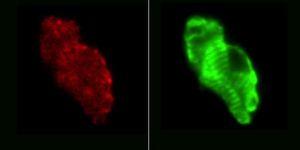More Cases of Symptomless Ebola Discovered in West Africa
In 2014 and 2015, the Ebola outbreak ravaged West Africa, killed over 11,000 people, and caused a huge international health crisis. But it was only recently that the World Health Organization officially declared the end of the outbreak.
And even though we can all breathe a sigh of relief, a new study just reported new cases of asymptomatic Ebola patients. The findings suggest that we can’t be lulled into a false sense of control, as there is much left to understand about the virus, and prevention and treatment strategies.
The Ebola virus causes severe hemorrhagic fevers, which can often be fatal. In fact, the virus kills up to 90 percent of people who catch it. The natural reservoir for Ebola is still unknown, but humans can get the virus through direct contact with infected blood or body fluids. People infected with Ebola start showing signs and symptoms from 2 to 21 days after exposure. In the beginning stages, symptoms can be non-specific, including fever, muscle pain, headache, and vomiting. Symptoms of hemorrhagic syndrome occur in the advanced stages of infection. There are yet no licensed vaccines or therapies against this virus.
While the symptoms described above are very typical of Ebola patients, researchers surveying an “Ebola hotspot” in West Africa found 14 Ebola patients who had no diagnostic signs of being infected.
Blood tests for these 14 patients revealed a slew of antibodies against the Ebola virus, indicating they were infected with the pathogen. However, the unique group of individuals were seemingly unaffected physically by the infection. Of the 14 individuals, 12 reportedly had no symptoms at all, while 2 people reported prolonged fevers.
Because symptoms of Ebola are non-specific to begin with, it is not hard to imagine that these 14 people would have even known that they were infected with the deadly virus. These silent carriers of the disease, then, could have unknowingly spread the virus. And because they don’t themselves display the symptoms, it would be difficult for health officials to detect the source of the infection. In this way, the silent carriers could undermine efforts to contain the outbreak.
The study was "really one of the first to study the rate of minimally asymptomatic cases of Ebola in a 'hot zone,'" said Michele Barry, professor at Stanford University School of Medicine, and a co-author of the new paper.
Writing in the journal PLOS Neglected Tropical Diseases, the authors were careful to also point out that 14 Ebola patients could have more symptomatic than they reported. That is, because Ebola is associated with a negative cultural stigma, people may be more apt to downplay their symptoms in an effort to dissociate themselves from the disease. Thus, it is possible that the silent carriers may not be so silent after all.
However, this is not the first study to report Ebola patients who exhibit no classic symptoms of the infection. In any case, we should probably err on the side of caution, and pursue Ebola research even more aggressively after these findings. Perhaps then we can discover natural defenses in these people that can be translated into a cure for Ebola.
Additional sources: Live Science










